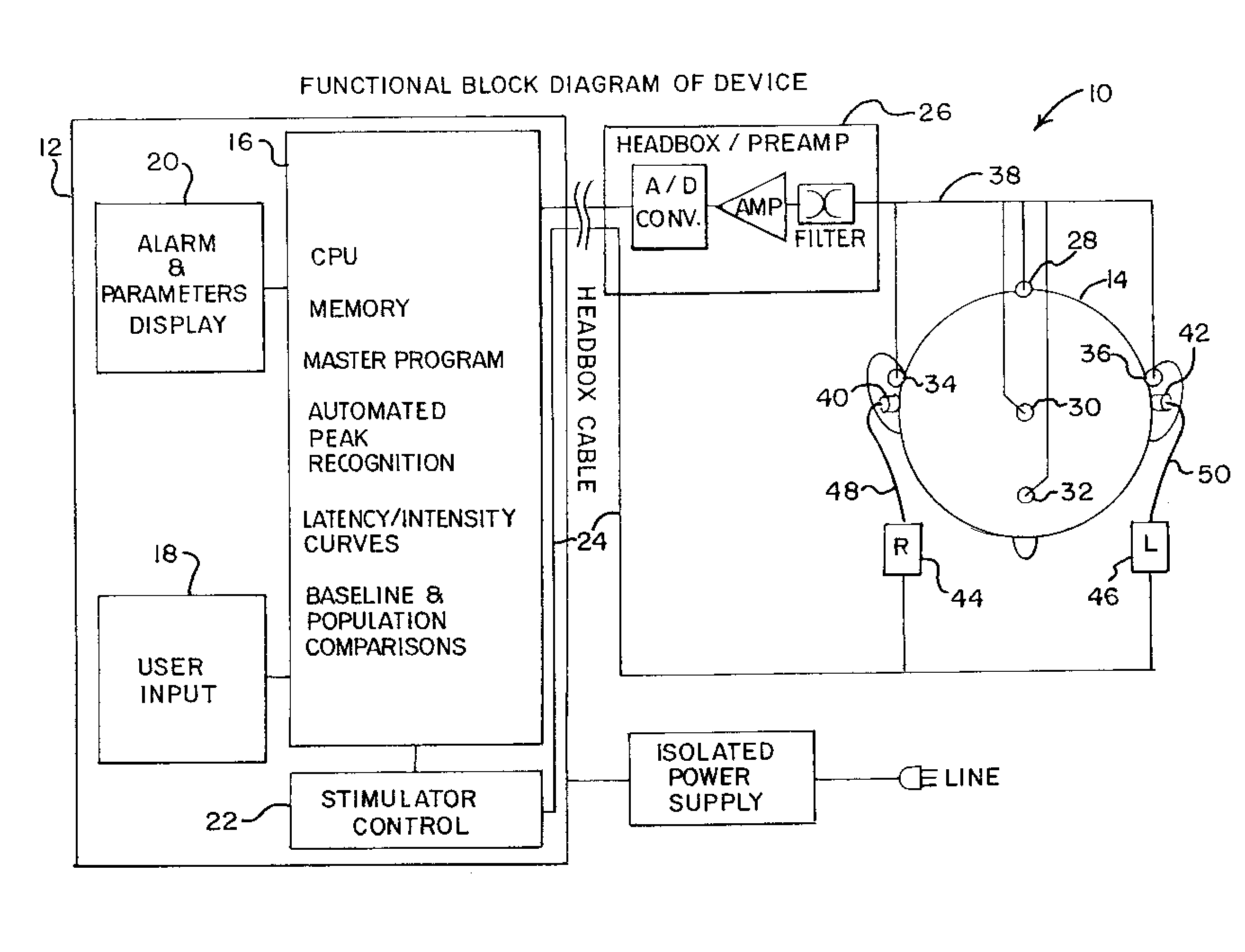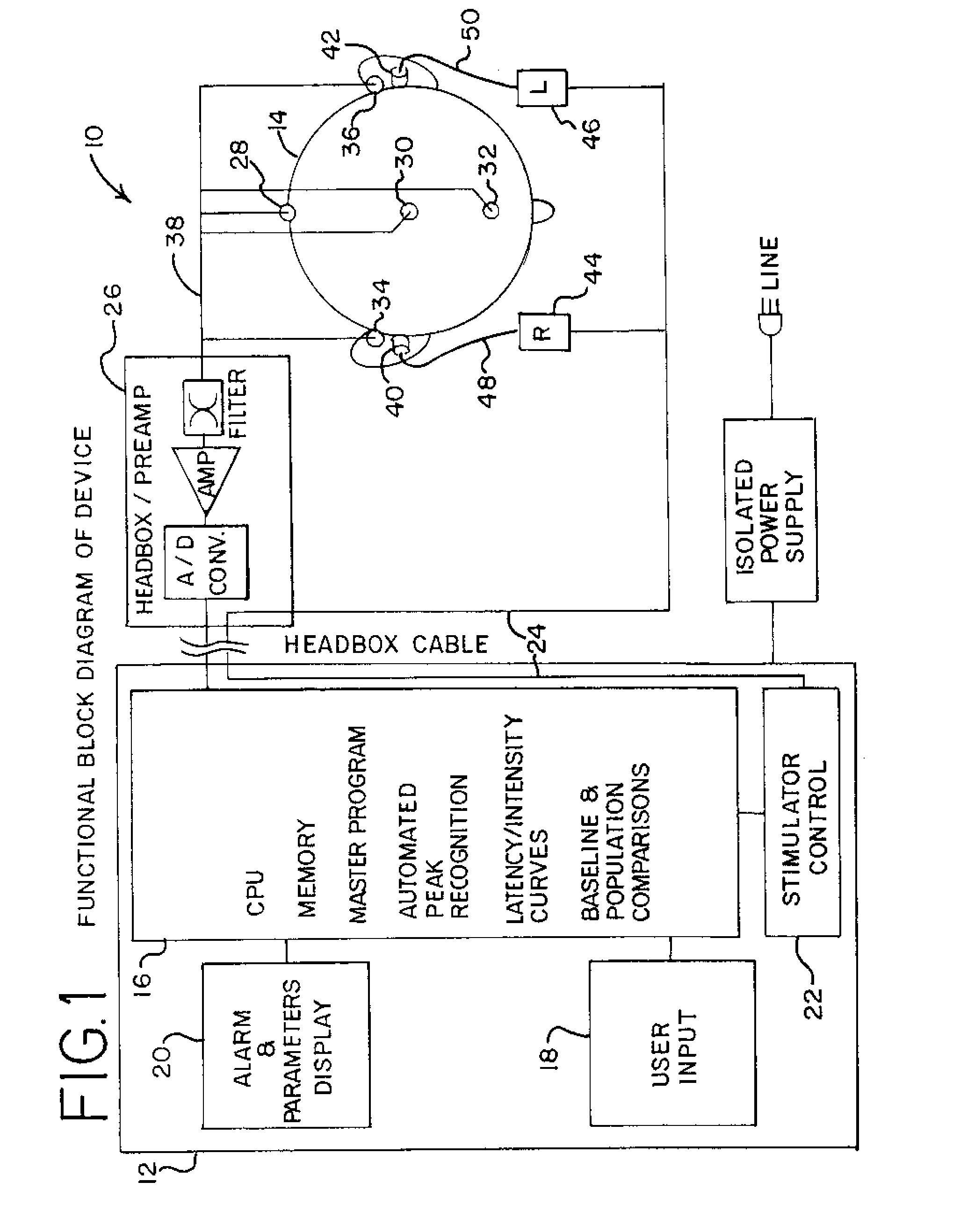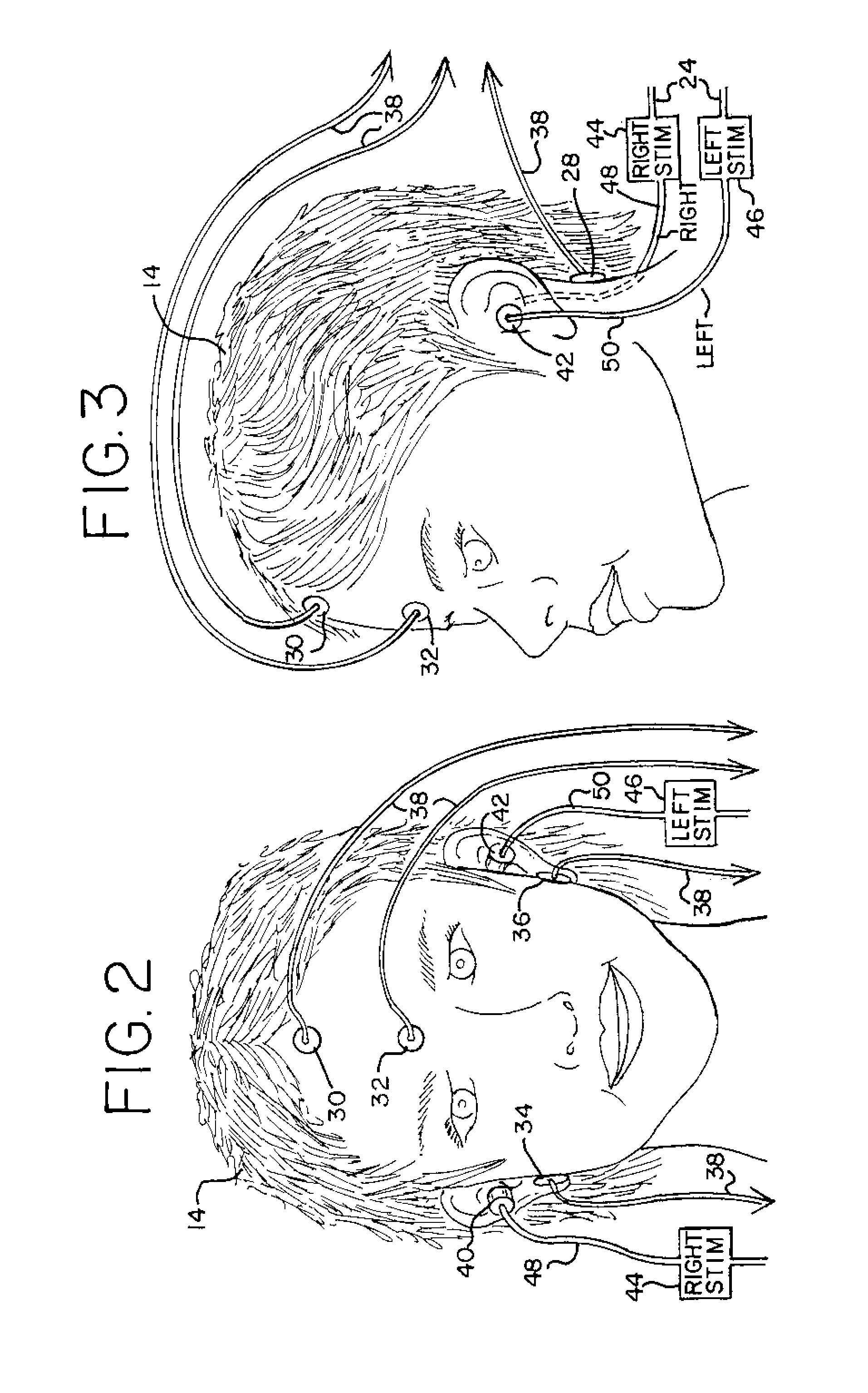Non-invasive, bedside intra-cranial pressure and brain shift/herniation monitoring unit utilizing early onset auditory evoked responses
a monitoring unit and brain technology, applied in the field of non-invasive monitoring of intracranial pressure, can solve the problems of increasing intracranial pressure, affecting the success of treatment, and affecting the accuracy of diagnosis and treatment, so as to achieve the effect of increasing icp
- Summary
- Abstract
- Description
- Claims
- Application Information
AI Technical Summary
Benefits of technology
Problems solved by technology
Method used
Image
Examples
Embodiment Construction
EMBODYING THE BEST MODE OF THE INVENTION
[0019]Patients would greatly benefit if a safe, non-invasive bedside method existed to automatically sample and interpret physiologic signals that reflect increasing ICP in a timely manner. The system of the invention is used to monitor ICP utilizes MABR or / and EcochG methodology, and is not significantly affected by patients taking depressant or paralytic medications, or under general anesthesia. The system should greatly impact patient care, save lives, and lead to fewer invasive ICP monitoring procedures. The system should be a valuable back-up safety measure to existing medical and surgical management, including invasive ICP monitors which can fail about 7% of the time.
[0020]As explained in greater detail below, the invention may utilize conventional components, such as Bio-logic (Natus / Bio-logic, Mundelein, Ill.) instrumentation and accessories. A commercially available Navigator Pro laptop based unit can be used to perform stimulation, r...
PUM
 Login to View More
Login to View More Abstract
Description
Claims
Application Information
 Login to View More
Login to View More - R&D
- Intellectual Property
- Life Sciences
- Materials
- Tech Scout
- Unparalleled Data Quality
- Higher Quality Content
- 60% Fewer Hallucinations
Browse by: Latest US Patents, China's latest patents, Technical Efficacy Thesaurus, Application Domain, Technology Topic, Popular Technical Reports.
© 2025 PatSnap. All rights reserved.Legal|Privacy policy|Modern Slavery Act Transparency Statement|Sitemap|About US| Contact US: help@patsnap.com



